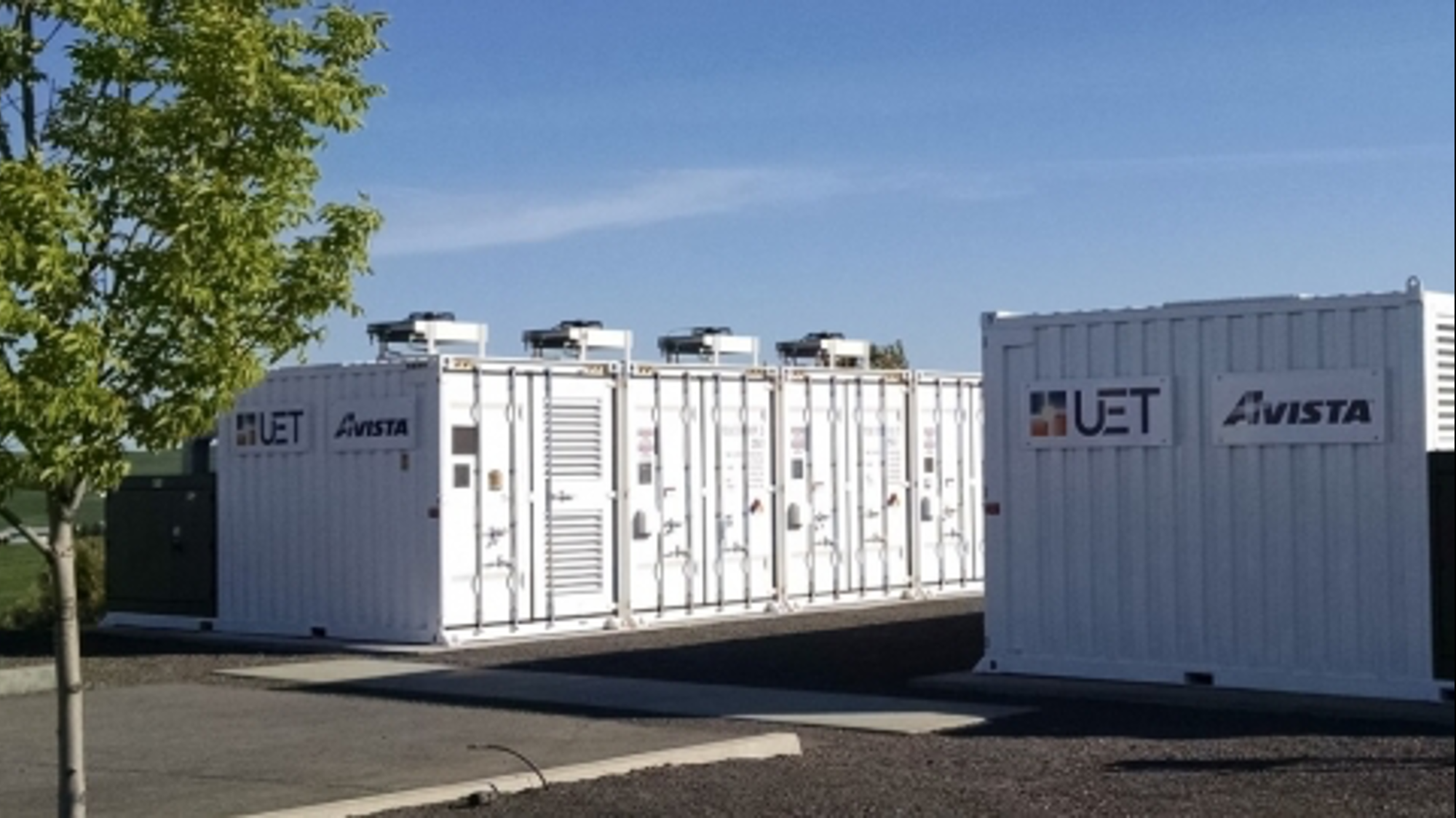
Blog post
Is the revolution in battery storage at risk of going flat?
In common with many middle-aged middle-class graduates, I like a good pithy quote. Our fridge at home is adorned with magnets that say uplifting thoughtful homilies like “life begins at the end of your comfort zone” or “live the life of your dreams not your fears”. One of my favorite quotes (although the context is too long to fit on a fridge magnet) is when Chinese premier Zhou Enlai was asked in 1972 about the impact of the French Revolution. Although this of course had happened in 1789, some 183 years earlier, his witty response was that “it is still too early to say”. That’s the thing of course with revolutions. They are quick, messy and bloody but the long-term implications are often unclear.
In our lifetime we are witnessing two sequential parts to a revolution in the more peaceful and prosaic world of energy; a seismic shift in how we generate it, followed by something equally profound in how, and more importantly when, we consume it. Unlike Mr. Enlai’s ambiguous view of the merits of the storming of the Bastille, I think we can safely say the first part of this revolution is likely to be a good thing. We are some fifteen years down the road now and the amount of global energy produced by some form of renewable generation is 14% and rising. Last year, the US alone installed 11,500 MW of capacity of wind and solar energy compared to 14,600 MW capacity of gas fired generation.
So the generation part of the revolution is well underway, unlikely to be reversed, and will probably be a positive thing for the planet all things considered. This may, in turn, inevitably give birth to a second act in energy storage – but I think the outcome of this is far less clear-cut.
Let’s start with the basic physics. A unique feature of electricity is that it most of it tends to be consumed within microseconds of production. The energy pushing the electrons that came out of your plug whilst you were reading this sentence were produced in your local power station less than a second earlier. It is hard to think of many other industrial or consumer goods that have the same instant relationship between production and consumption.
This physical feature of electricity causes a financial problem, though, for both the suppliers and consumers of the product. Daytime demand for electricity varies enormously. Here in the UK, in the summer it peaks at about 35 GW in the early evenings when we are all in different places (busy at work, at school or on the train) and falls to a trough of 20 GW in the middle of the night when most of us (apart seemingly from my teenage children) are at home and fast asleep. The National Grid has lived with this frustratingly spikey demand profile for a long time and has evolved a wide series of complicated mechanisms to try to balance it with supply. Mostly, it’s about supply adapting to ongoing demand, but there are a few tools to nudge demand as well. One of their crudest but most effective is to try to flatten the peaks by hiking the price and hence for industrial users the retail price of electricity varies enormously by time of day. This is no doubt very annoying if your factory shifts don’t follow quite the same pattern.
The simplistic argument in favor of investing in storage is that this imbalance will only increase as more intermittent generation replaces dispatchable generation. Solar generation obviously tends to peak in the middle of the day whilst the wind blows at various times throughout the year and so, the argument goes, the imbalance is likely to become more pronounced and hence the difference in prices will only become starker. Charge your battery or refill your pumped hydro scheme when it is very windy and/or sunny and prices are low (or even negative), sell it back to the grid in the early evening when they are high, and the price arbitrage will make you rich.
This opportunity gives rise to the huge numbers bandied about for the potential for investment in storage. And indeed, at lots of conferences we go to there is excited talk of up to £500 billion being invested in Europe alone in the next ten years.
However, I am not convinced that this assumed link between the growth of renewables and the growth of storage is valid.
Firstly, the grid has always faced a supply/demand imbalance and base load generation has never been truly dispatchable. Anyone who watched the recent Chernobyl series will know that unfortunately you can’t quickly turn a nuclear power station on, or more critically off, as required.
Secondly, the argument assumes that new generation capacity will continue to be based on technologies that are fundamentally intermittent. However, as other forms of renewables such as biomass, waste, and hydrogen become more prevalent, the net intermittency of all combined renewable generators could be quite small.
Thirdly, as more interconnecting networks are established this net intermittency will have less impact. It is pretty much always windy and/or sunny somewhere in Europe, and the act of linking countries will extend the period of available supply into the demand peaks.
Fourthly, other initiatives such as smart metering and domestic half hourly billing may shift consumer behavior so that we all don’t consume electricity at the same time.
Finally and more fundamentally, the price arbitrage that result from the supply/demand imbalance will inevitably erode as more storage is put onto the system. To build a battery storage system all you really need is a concrete foundation, a friendly planning authority, and a grid connection, so the barriers to entry to the market are very low. Every MW of capacity of new storage diminishes the supply/demand imbalance and this will drag down the whole market over time. This is what a banker recently proudly referred to me as his own “cannibalization theory of storage: the market will eat itself in the long run”.
He went on to say that as a result, funders like him have a bit of a “prisoner’s dilemma”. If nobody else invests in storage, the arbitrage opportunity persists and so the few people who were brave enough to take the plunge will all make decent returns in the long term. However, if everybody else goes out and invests in storage schemes, the market will eat itself and nobody including the brave early movers will make any money anymore.
This uncertainty also creates a dilemma for governments. Either they stand to one side and let the market find its own eventual equilibrium, or they get involved to try to move things forward a bit more quickly. In the UK grid-balancing mechanisms like the Capacity Market (CM) and the Short Term Operating Reserve (STOR) are used to go some way towards reassuring funders that there are financial rewards for investing in storage over and above the arbitrage opportunity.
For those of you not familiar with the intricacies of the UK grid, the Capacity Market is a payment by the grid to operators for having available generation or storage capacity on the system, and STOR payments are made when that capacity is called upon. Confusingly, there is also an availability payment for STOR providers but this is fairly small, so STOR payments only really get significant if the generated or stored energy is actually used. Both CM and STOR payments help the business case for storage, but in aggregate they do not add up to the returns that my banker friend is looking for. Ultimately, he is still contemplating a leap into that dark scary place called electricity price arbitrage.
The UK government of course could do more to address this by having separate CM/STOR payments solely for storage systems to nudge up pre-arbitrage returns. But, and it’s a big but, why should they? Storage may not be as important a part of the UK grid as some people think, so civil servants may opt to wait patiently on the sidelines and see how this one plays out before intervening to favour storage over other developments.
If anything, the UK government is going the other way by making storage systems compete with generators on a slightly sloped playing field. Battery storage was recently ‘derated’ by Ofgem in the CM auction process, because it was seen to provide power for a shorter period than a gas fired generators. As a result, derated storage receives a much lower capacity payment per MW hour than its gas-burning rival. Clearly this didn’t help reassure already nervous investors and only 150 MW of derated storage capacity was successful in the 2018 auction (compared to 500 MW in the previous year), whereas about 400 MW of new build small-scale gas generation projects were awarded contracts in the same process.
So despite the direction of the tide apparently pushing in favor of investing in storage, there are lots of headwinds blowing the other way. Ultimately, we think the European and UK electricity markets will reach uneasy equilibriums between a lot of different things; evolving consumer behavior, intermittent but interconnected generation, constant baseload generation, quite a bit of available flexible generation (gas-fired and hydro), and various forms of storage. However, we are still in the early days of this stuff and nobody knows where these equilibriums are or how long it will take to get there. All of this uncertainty is inevitably making funders pause and suck a thoughtful tooth. Investment horizons for project finance tend to be in the ten to twenty year range and it would be a brave banker who bets on the current price arbitrage opportunity remaining in place for that long.
All revolutions come to an end eventually but there is rarely any real consensus on whether or not they were a good idea until well after the event. I don’t think the French have an appetite for another one anytime soon. Equally, I am not convinced that having just spent the last decade investing trillions in renewable generation, the banking community is about to spend the next ten years betting another £500 billion on either European or UK storage projects just because there is currently an arbitrage opportunity and some unpredictable CM and STOR payments. Only time will tell of course, although to finish with another pithy quote from John Maynard Keynes: “The long run is a misleading guide to current affairs. In the long run we are all dead”.

